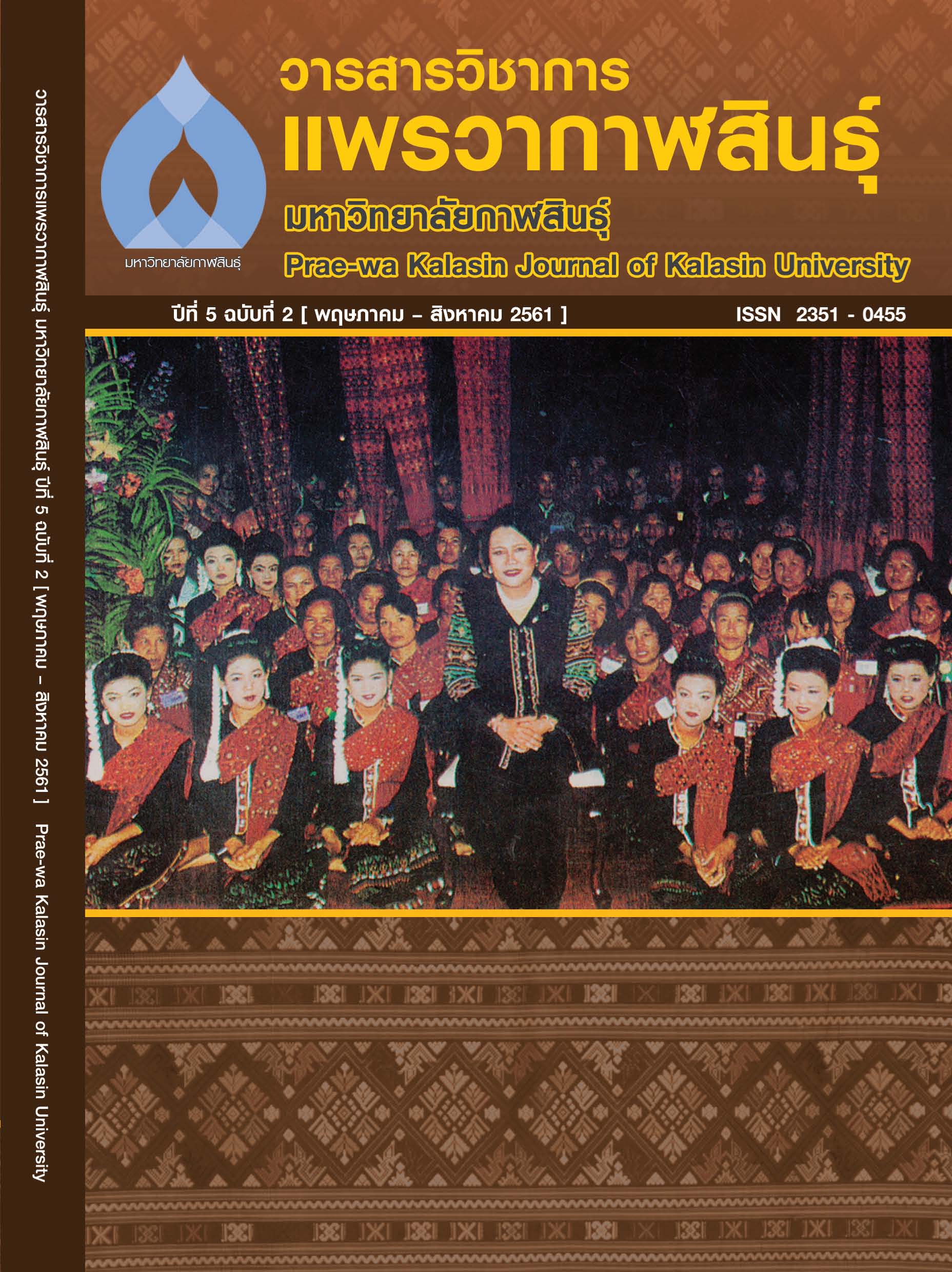The Development Learning of SCTAC MODEL to Enhance Practical Skills and Creative Thinking for Matthayomsuksa II Students
Main Article Content
Abstract
The purposes of this research were: 1) to analytical study basic information of SCTAC MODEL to enhance practical skills and creative thinking for Matthayomsuksa II students, 2) to develop and verify the efficiency of SCTAC MODEL, 3) to test the SCTAC MODEL and 4) to assess the SCTAC MODEL. This research adopts mixed methodology of quantitative and qualitative research. The population consisted of 60 Matthayomsuksa II students in the second semester on academic year 2015 at Bandinjee School and the 30 samples were selected by cluster random sampling. The research instruments were test, task assessment form and questionnaire. The data were analyzed by using mean, percentage and dependent t-test. The results found that: The SCTAC MODEL were 5 steps of syntax as follows: Stimulate : S, Constructive Learning : C, Transfer of Learning : T, Active Learning : A and Cooperative Learning : C (contained six steps of the process; 1) Interest Problem, 2) Brainstorm to analytical study 3) design and practice, 4) verify, 5) Improve and 6) evaluate). The quality of SCTAC MODEL was at high level ( = 4.29). The students’ achievement scores were significantly higher than pre-test scores at the .01 level. The students’ creative thinking scores were significantly higher than pre-test scores at the .01 level. The students’ creative thinking scores were significantly higher than pre-test scores at the .01 level. The assessment of students’ practical skills were appropriate at the highest level (
= 4.62). The assessment of SCTAC MODEL was appropriate at high
level ( = 4.43)
Article Details
References
ทิศนา แขมมณี. (2554). ศาสตร์การสอน (พิมพ์ครั้งที่ 14). กรุงเทพฯ: ด่านสุทธาการพิมพ์.
พิมพันธ์ เดชะคุปต์ และคณะ. (2549). “คู่มือครูพัฒนาทักษะการคิดขั้นสูงของนิสิต นักศึกษาระดับปริญญาตรีสำหรับหลักสูตรครุศาสตร์: การบูรณาการทักษะกระบวนการคิดในการเรียนการสอนเนื้อหาสาระ”. โครงการวิจัย เรื่อง การนำเสนอรูปแบบเสริมสร้างทักษะการคิดขั้นสูงของนิสิตนักศึกษาครู ระดับปริญญาตรี สำหรับหลักสูตรครุศาสตร์. ศึกษาศาสตร์. กรุงเทพฯ: คณะครุศาสตร์. จุฬาลงกรณ์มหาวิทยาลัย.
ไพรฑูรย์ สุขศรีงาม. (2545).“การศึกษาแนวทางการพัฒนาคุณภาพ”ใน เอกสารประกอบการเรียนสัมมนาหลักสูตรและการสอนวิทยาศาสตร์และเทคโนโลยี. หน้า 4. มหาสารคาม: คณะศึกษาศาสตร์ มหาวิทยาลัยมหาสารคาม.
สุวิทย์ มูลคำ และอรทัย มูลคำ. (2543). การเรียนรู้สู่ครูมืออาชีพ (พิมพ์ครั้งที่ 4). กรุงเทพฯ: ที.พี.พริ้นท์.
สำนักงานรับรองมาตรฐานและประเมินคุณภาพการศึกษา. (2556).รายงานการประเมินคุณภาพภายนอกรอบสาม (พ.ศ. 2554-2558).
สำนักวิชาการและมาตรฐานการศึกษา. (2551). ตัวชี้วัดและสาระการเรียนรู้แกนกลางกลุ่มสาระการเรียนรู้การงานอาชีพและเทคโนโลยีตามหลักสูตรการศึกษาขั้นพื้นฐาน พุทธศักราช 2551. กรุงเทพฯ: กระทรวงศึกษาธิการ.
อารยา ช่ออังชัญ. (2553). การพัฒนารูปแบบการเรียนการสอนเพื่อส่งเสริมความสามารถในการคิดแก้ปัญหาอย่างมีวิจารณญาณกลุ่มสาระการเรียนรู้วิทยาศาสตร์ของนักเรียนชั้นประถมศึกษาปีที่5.วิทยานิพนธ์ปริญญา ดุษฎีบัณฑิต มหาวิทยาลัยศิลปากร.
อารี พันธ์มณี. (2543). การพัฒนาความคิดสร้างสรรค์สู่ความเป็นเลิศ. กรุงเทพฯ: ภาควิชาการแนะแนวและจิตวิทยาการศึกษา คณะศึกษาศาสตร์ มหาวิทยาลัยศรีนครินทรวิโรฒ ประสานมิตร.
______. (2545). ฝึกให้คิดเป็น คิดให้สร้างสรรค์.กรุงเทพฯ: ใยไหม.
American Diploma Project. (2015). ADP Benchmarks [Online]. Retrieved February 16, 2015, from www.achieve.org
Craig, R. (2015). Thinking Skills in Education. [Online]. Retrieved February 16, 2015, from http://www.asa3.org/ ASA/education/think/skills.htm
Davies, I.K. (1971). The management of Learning. Lodon: McGraw-Hill.
Maslow, Abraham Harold. (1970). Motivation and Personality. (2nd ed.). New York: Haper and Row Inc.
Harrow. A. (1972). A taxonomy of the Psychomotor do man: A guide for developing behavioral Objective: New York: Longman.
Hergenhahn, B.R. & Olson, M.H. (1993). An introduction to theories of learning. (4thed.). Engle wood Cliffs, New Jersey: Prentice Hall.
Torrance, E.P. (1965). Rewarding Creative behavior. Englewood Cliffs, NJ: Prentice Hall.

